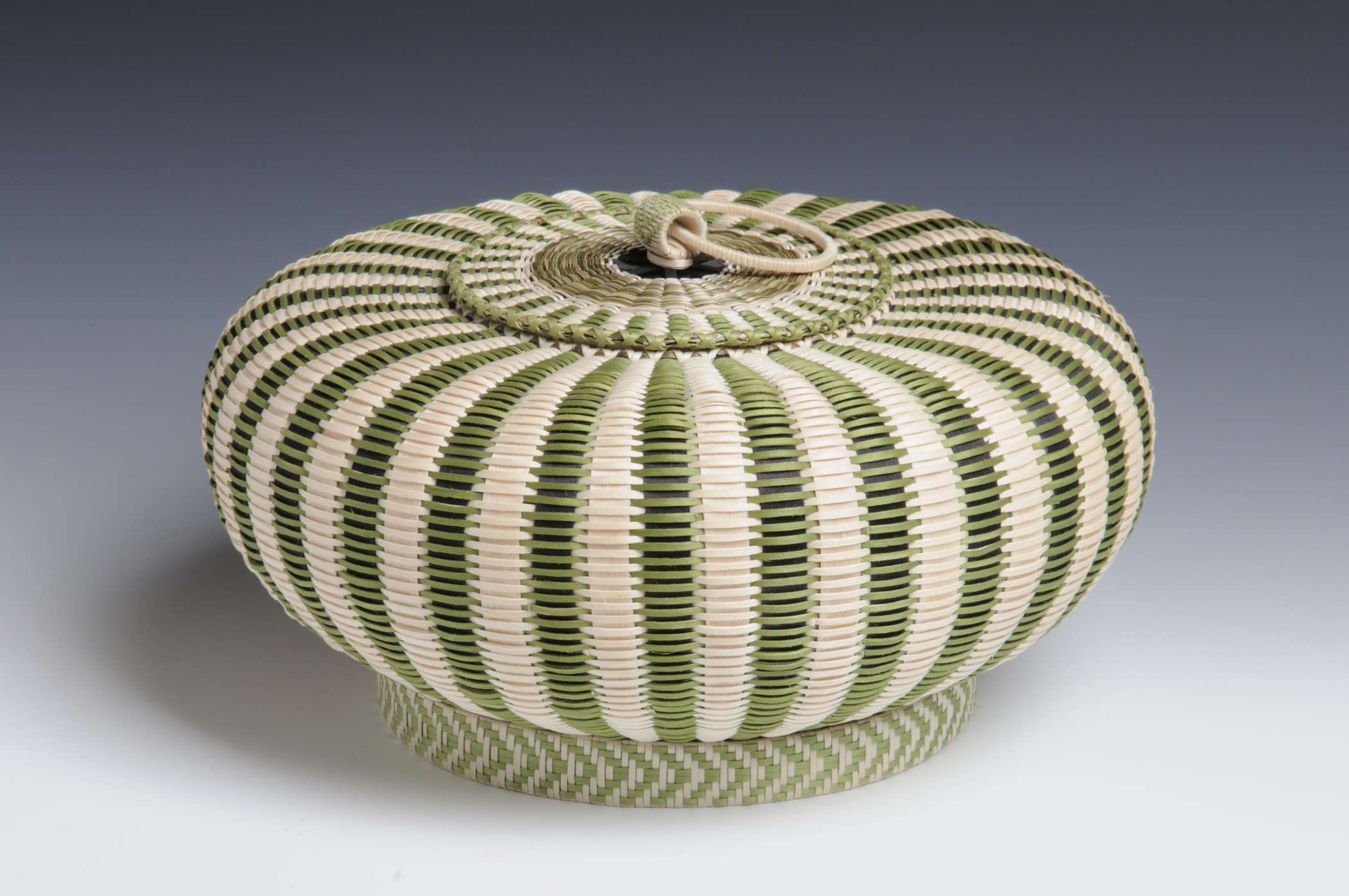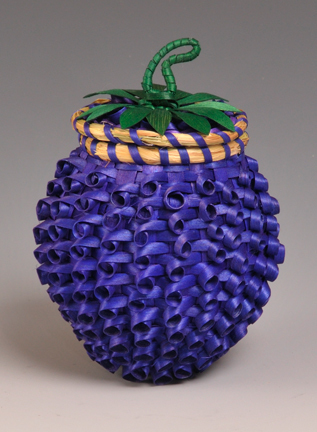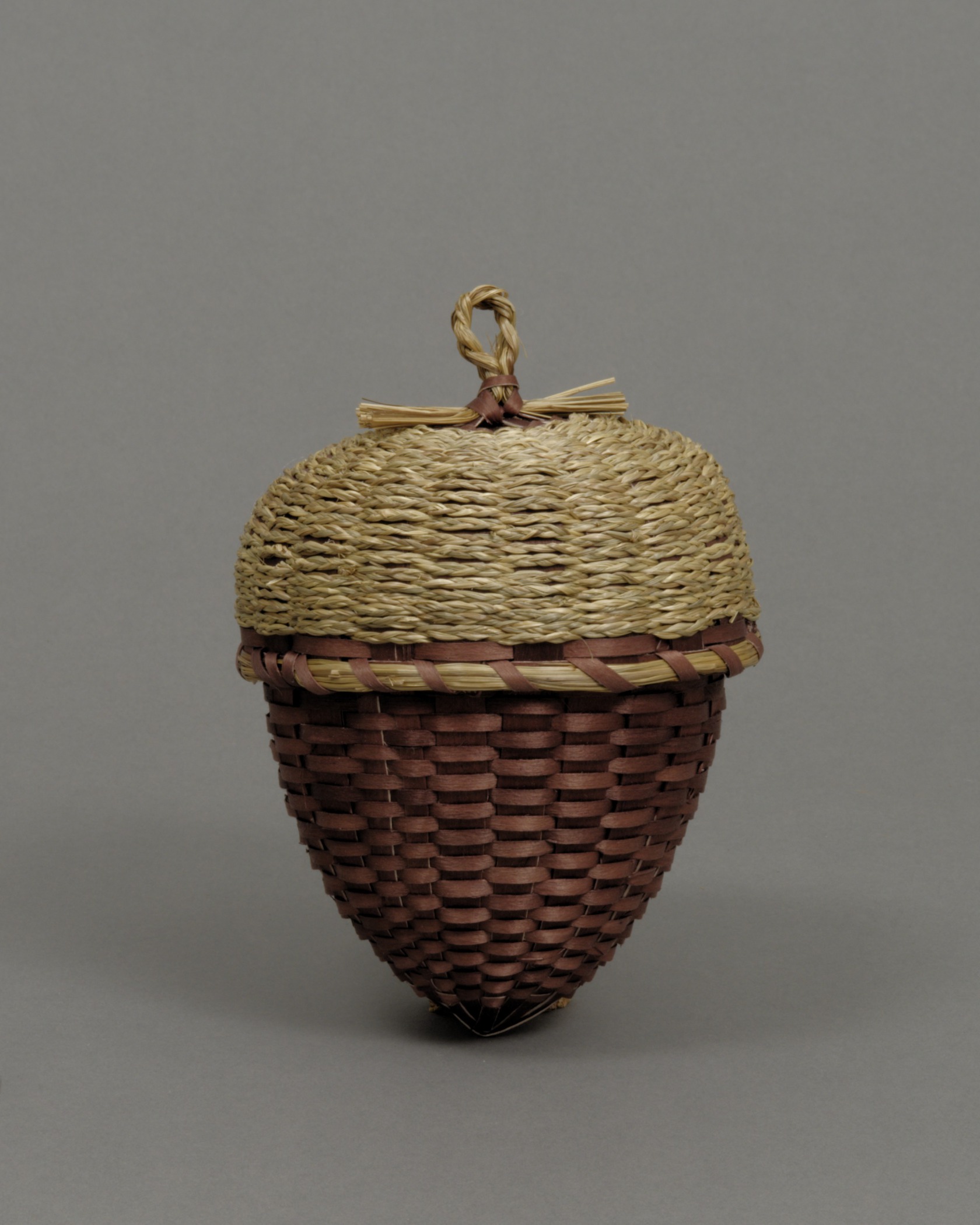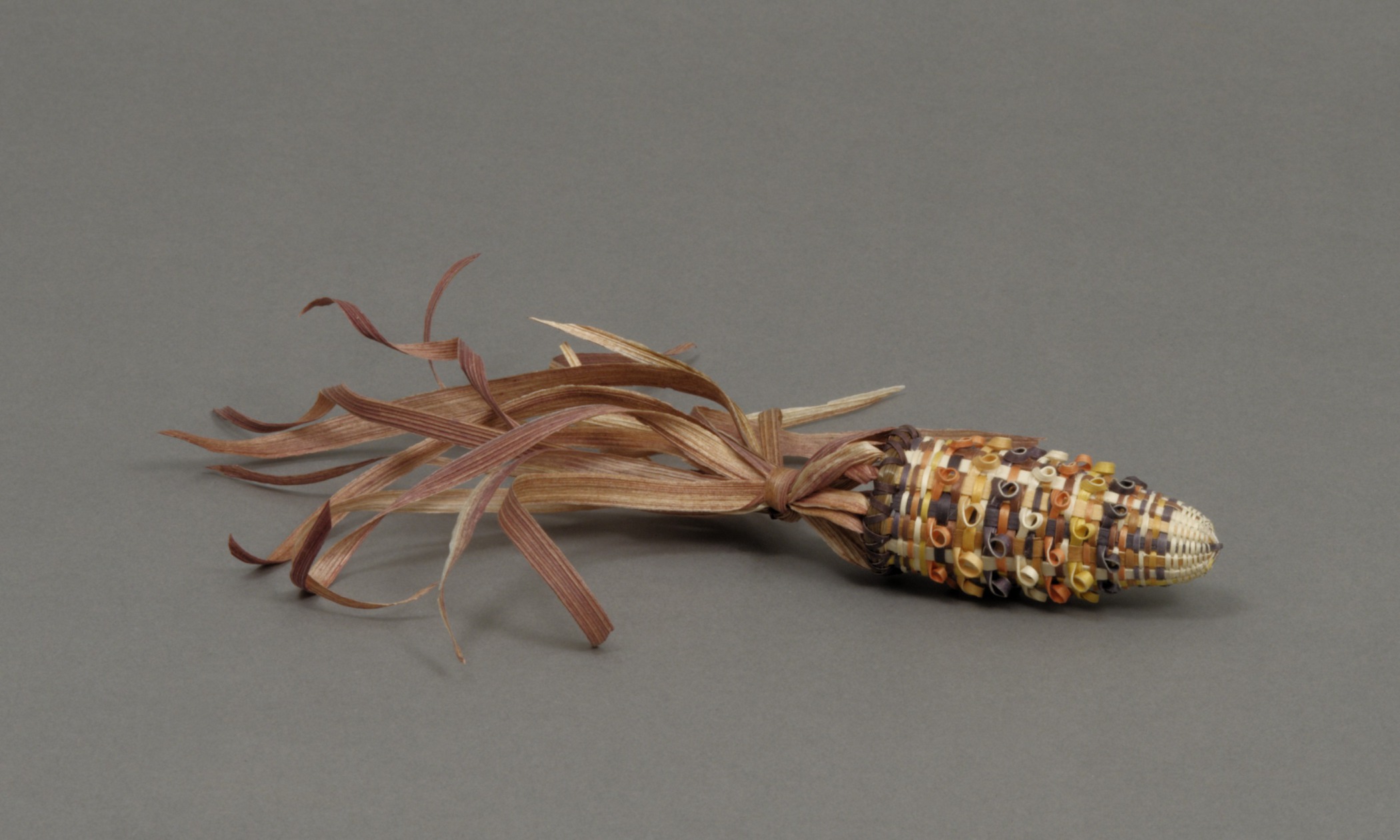Jeremy Frey, American (Passamaquoddy), born 1978
Green urchin basket
- 2008
- Brown ash and sweetgrass; dye
- 5 7/8 × 9 1/4 in.
Hood Museum of Art, Dartmouth College: Purchased through the Phyllis and Bertram Geller 1937 Memorial Fund; 2008.51. ©Jeremy Frey
The waters of the Northeast—the ocean, rivers, ponds, and lakes—provided important food sources for the Wabanaki. The shape and colors of this basket were inspired by a sea creature.
explore the object
Sea urchin
Jeremy Frey, green urchin basket, 2008, in pieces
The flattened oval shape of this basket and its alternating stripes of white and green mimic the look and feel of a sea urchin, a small round animal with a hard shell.
The Passamaquoddy and other coastal people collected sea urchins, as well as clams, mussels, and crabs, as part of their diet. Live sea urchins have spiky spines for protection against predators. The spines fall out when the urchin dies, leaving only its outer skeleton, as shown here.
Jeremy Frey (pronounced Fray), an award-winning Passamaquoddy basket weaver from Maine, wove this basket. Frey created this work in three parts: the basket, the lid, and a small stand. By providing the basket with its own pedestal, Frey asks us to consider his creation not as an object for everyday use, but as a work of art.
Meet the Artist
Jeremy Frey was born and raised on the Passamaquoddy tribal land of Indian Township, one of two Passamaquoddy reservations in the state of Maine. He learned to weave baskets from his mother, and began weaving in earnest in his 20s. He engages in all aspects of basket making, from gathering sweetgrass to selecting the ash trees and preparing the splints. He is known for combining traditional materials with innovative new designs. His baskets have won many awards, including Best of Show at the Santa Fe Indian Market, an important event for showcasing contemporary Native American art.
Learn More
Watch Jeremy Frey and his wife, Ganessa Bryant, weave baskets and talk about their work on the YouTube channel of the Hudson Museum at the University of Maine.
Ganessa Bryant's work can also be found in a Hood Museum of Art Learning to Look lesson.





